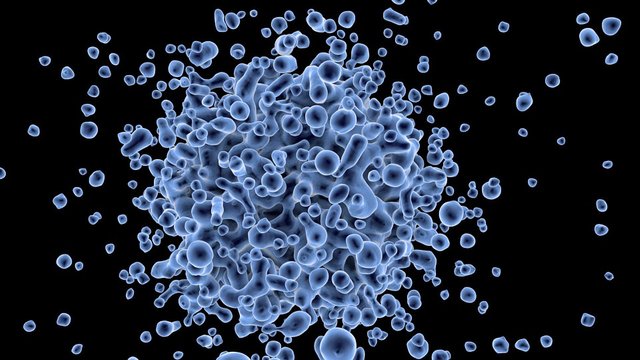The atypical organization of the viruses

Virus, source of image of pixabay
The viruses there contains only one acid nucleico that can be ADN or ARN, the acid nucleico is associated with a certain number of proteins, the nucleoproteína is always surrounded with a protein so-called structure cápside, formed by the repetition of a few sub units, the capsómeros, the complex formed by the cápside and the nucleoproteína is the nucleocápside.
I mention Them that the cápside of the majority of loes virus present symmetry cubic or spiral.
The characteristic essential common to the cycles of multiplication of all the viruses they understand the entry in the citoplasma of a cell hospedadora sensitively: the reproduction to produce a descent of viriones, the liberation of these to the ambience and his survival in him.
Microbiology for Roger Y. Stanier-1996; page 233.
Apart from the cápside, some viruses have only one tail formed by contractile proteins that intervenes in the inoculation of the acid nucleico inside the cell during the process of infection. The viral ADN can be of simple chain, who can adopt linear or circular form, as for ARN also can be monocatenario or bicatenario, for to be able to live and reproduce is necessary that they find inside others organism, where it is activated, it is necessary to take in account that in the multiplication of the viruses there can distinguish several phases, which next I am going to mention:
1. The adsorption is the fixation of the viral particle on the cellular surface.
2. The penetration is the entry of the viral particle or of his acid nucleico in the cells; what the bacterial cells (bacteriófagos) infect, they perforate the bacterial wall, with such form inoculate the acid nucleico inside the bacterium and leave the rest of the viral particle in the exterior; what the cells attack animal, in this case they penetrate in the cells well fusing his membranes with the cellular membrane or for fagocitosis.
3. In this stage it presents the loss of the protein covering to leave the acid nucleico freely in the citoplasma of the cell host.
4. The replicación and the trascripción of the genetic material are carried out with viral enzymes, the translation always does to expensa of the host.
5. The spontaneous assembly of all the molecules that form the viral particles.
6. In this stage we have the liberation of the virus that already has his finished structure host can go out of the cells.
When there is present the picture of described infection, the name of cycle lítico, the fascinating thing happens at this cellular level, that many bacteriófagos, once they are already inside of the bacterium, have the aptitude to incorporate his acids nucleicos into the molecule of the ADN of the same one, does not allow to escape at all. This process constitutes the cycle lisogénico of the bacteriófagos, where the acid nucleico viral can become independent of the genetic bacterial material and go on to the stage of the cycle lítico later to the penetration.
Bibliographical Source.
Virus: molecular study with clinical orientation for Teri Shors - 2009.
Introductory concepts to the Fitopatología - Page 100 for German Rivera Coto - 1999.
Microbiology - Page 233 for Roger Y. Stanier, Julio R. Villanueva - 1996.
